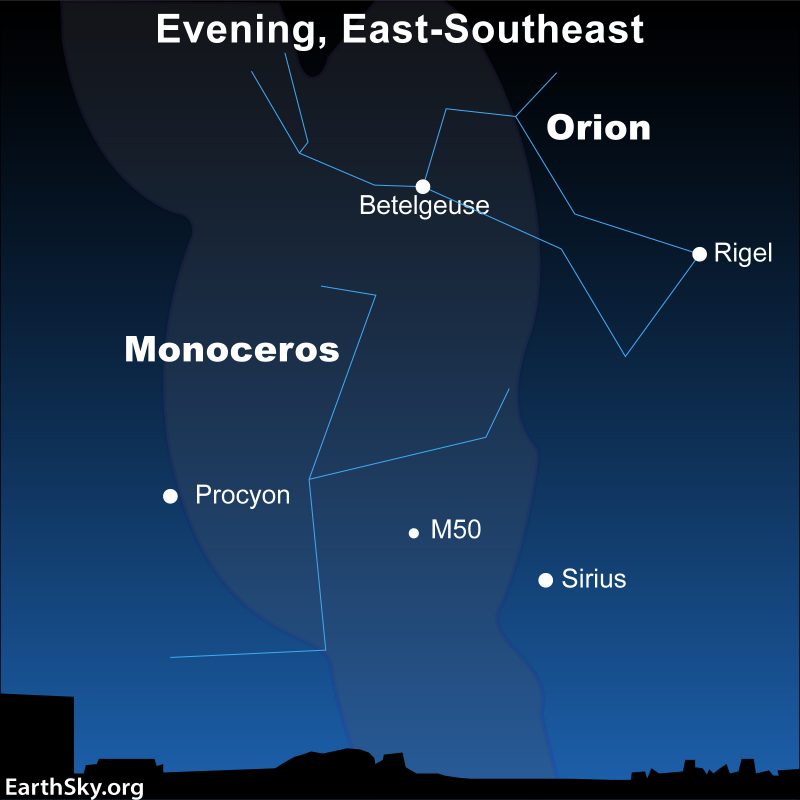
Unicorns might not exist on Earth, but you can find one in the night sky. Monoceros the Unicorn is a constellation that Dutch cartographer Petrus Plancius created in the early 1600s. The Unicorn is in a good position for viewing in the January evening sky, but you’ll need a dark sky to see it. Monoceros will be out nearly all night long. It’ll be higher up and easier to see in the later evening hours.
How to find Monoceros
Let’s find the Unicorn, which comes out at nightfall. Focus in on the bright stars Betelgeuse, Sirius and Procyon (see charts on this page). They make a triangle, which – in the Northern Hemisphere – has the nickname the Winter Triangle. But you can see these stars from the Southern Hemisphere, too. In fact, Orion and the stars near it are even better placed for viewing from the southern part of Earth’s globe.
Within the triangle of stars made by Betelgeuse, Sirius and Procyon – hidden between the many bright and glittering stars and constellations visible at this time of year – there’s a constellation that’s as elusive in our night sky as its namesake is in countless fairy tales.
This is the constellation Monoceros the Unicorn.


Star clusters in the Unicorn
The winter Milky Way runs through Monoceros, so if you can this region with optical aid, you’re sure to see something pop out at you. With binoculars, you can see star clusters here. Those with dark skies might try drawing an imaginary line from the star Sirius to Procyon. About a third of the way along this line, you’ll find a hazy object – an open star cluster – called M50.
You need a telescope to see M50 clearly. But, with an ordinary pair of binoculars, this cluster of stars is wonderful to glimpse and contemplate on a winter night. There are actually about 100 stars in the little patch we know as M50. The main part of the cluster is about 10 light-years across. The entire cluster is located some 3,000 light-years from us.
Bottom line: Treat yourself to a visit with a mythical beast – Monoceros the Unicorn – in the January evening sky.
The post Monoceros: Capture a glimpse of the Unicorn first appeared on EarthSky.
0 Commentaires